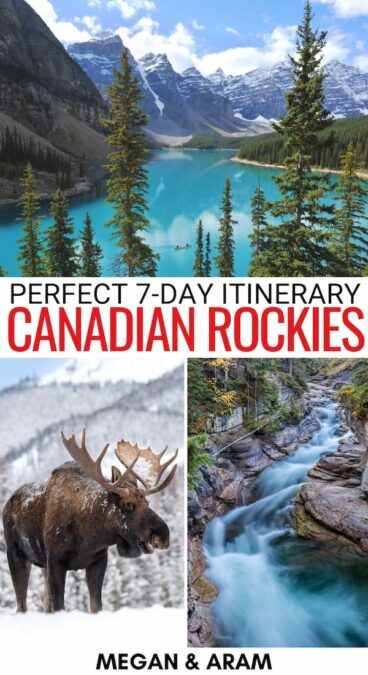If you want to explore the breathtaking landscape of the majestic Rockies, this 7 day Canadian Rockies itinerary offers the best plan forward!
Begin your journey in Banff National Park, where you can enjoy some hikes, drives with beautiful views, and lakes with turquoise hues.
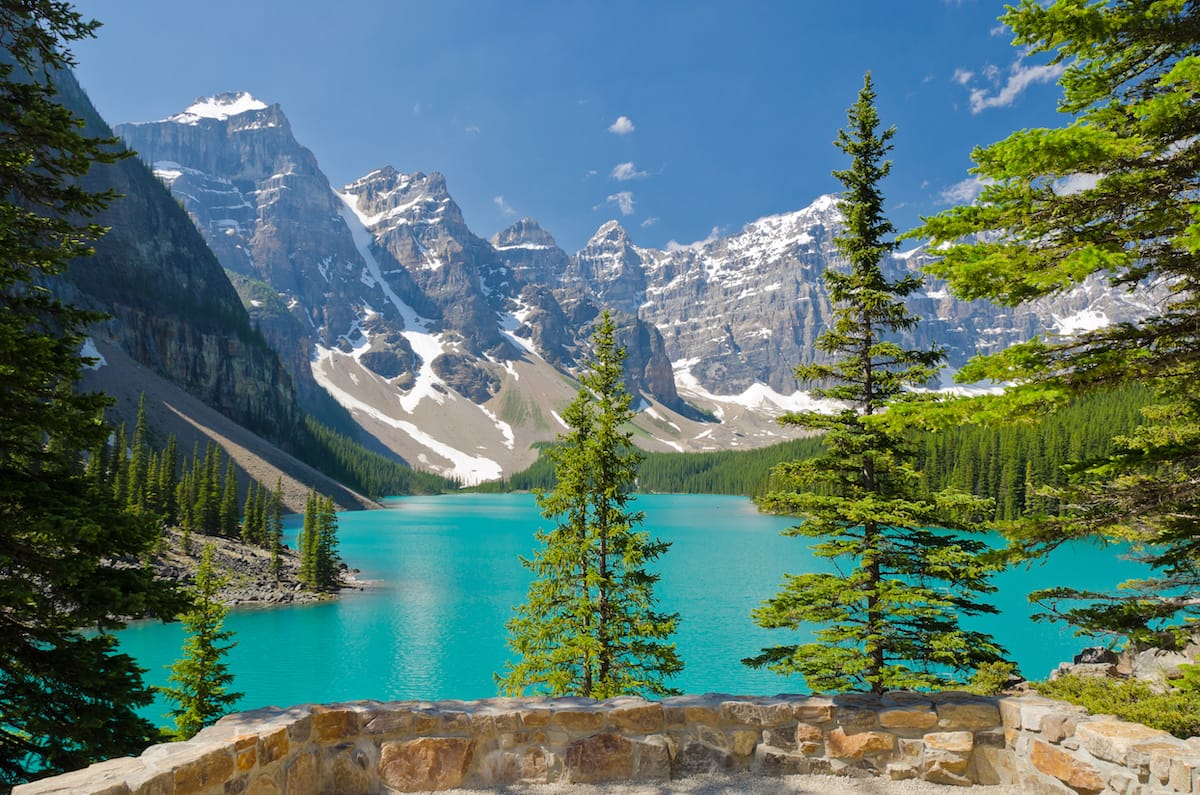
Then venture to Jasper National Park for three more days of adventuring before heading home or expanding your trip by exploring Yoho or Kootenay National Parks if time permits.
Before you start your travels through the Rockies, remember to purchase a Discovery Pass from Parks Canada – either a daily pass or a yearly pass depending on your needs!
🚗 Click here to uncover the best rental car rates for Canada!
Did we miss any epic spots to include on a week-long itinerary for the Canadian Rockies? Let us know in the comments!
In this post...
Where To Stay in the National Parks
Camping provides the most economical way to see the Rockies. However, if you prefer hotels, you can choose from luxury brands like the Fairmont hotels to budget-friendly hostels.
The Fairmont owns the Banff Springs and Chateau in Lake Louise, plus the Jasper Park Lodge.
Booking ahead provides the lowest prices. Should you visit during the peak summer months, expect sticker shock on hotels in Banff town and downtown Jasper.
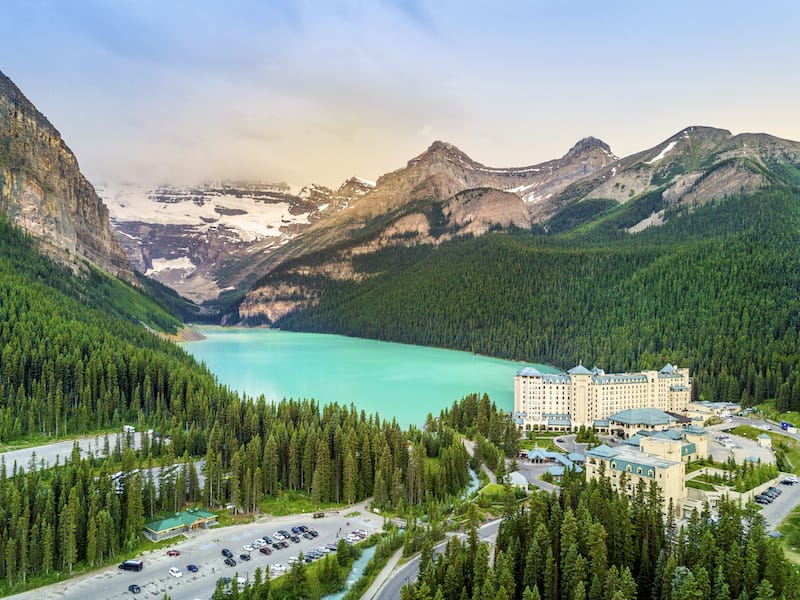
If a hotel in the park isn’t within budget, accommodation in nearby Canmore can save you 50% on accommodation with an easy 20-minute drive to Banff.
Hinton provides budget-friendly hotels outside of Jasper, but you will need to drive 55 minutes each way to get back to Jasper.
7 Day Canadian Rockies Itinerary
One of the most essential things to do while planning your Canada Rockies itinerary is to ensure you have a car!
>> Click here to check rental car rates in Canada
Day 1
Kickstart day one by tackling one of the best hikes in Banff, Johnston Canyon. While the trail gets crowded, by going early, you’ll secure parking and hit the trail before it gets busy.
The trail starts on the Bow Valley Parkway, where you have the option to do the 1.2 km journey to Lower Falls or the 2.5 km trek up to Upper Falls.
During this hike, you can marvel at seven gorgeous waterfalls while walking on suspended walkways over the canyon.
In summer, you can treat yourself to a coffee from the small cafe hut at the trailhead as a reward for completing the hike. Hiking the canyon in winter provides a different experience.
With temperatures plummeting to -22F (-30C), you’ll enjoy the winter wonderland with few people.
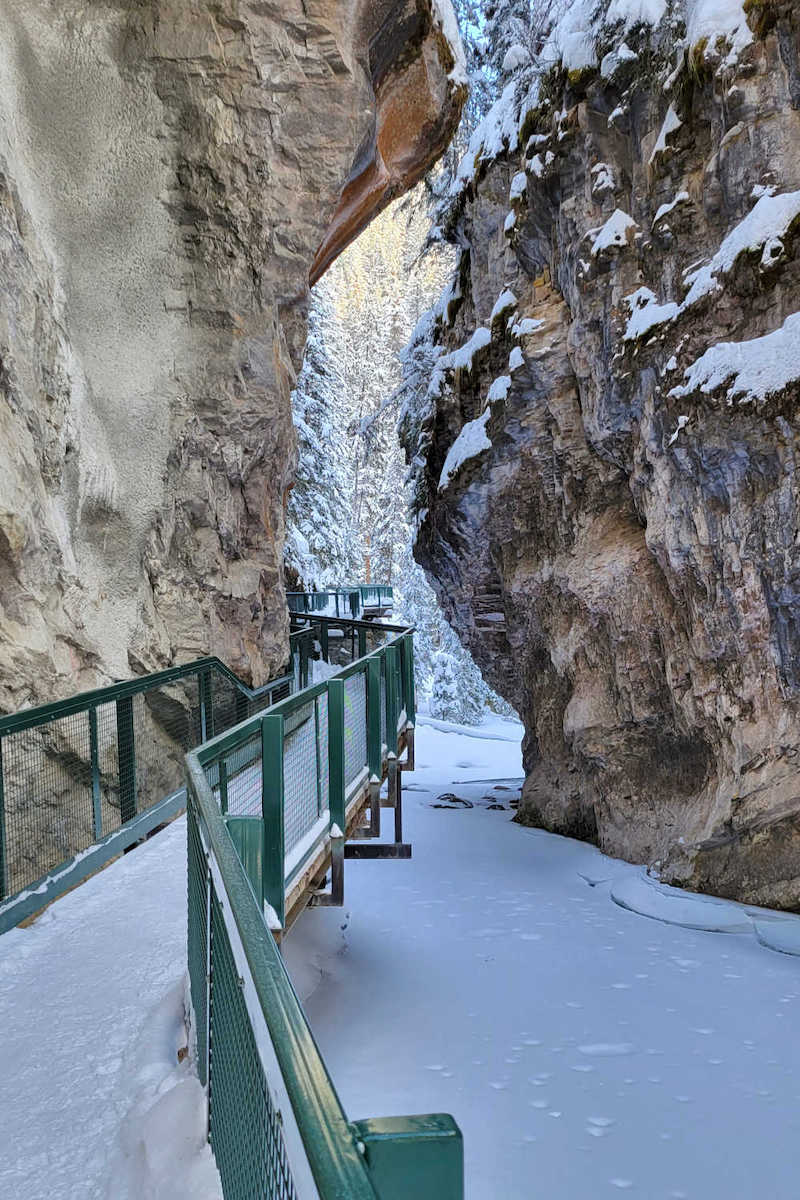
From Johnston Canyon, enjoy a relaxing drive to some of Banff’s viewpoints.
Head to the Surprise Corner Viewpoint on the north side of Bow River. Here, you’ll capture great photos with Bow Falls and the Fairmont Banff Springs Hotels towering above it.
Follow the Tunnel Mountain Drive until you reach the Banff Hoodoos Viewpoint. Stretch your legs along the ridge pathway above the natural rock formation.
In the afternoon, explore three lakes located close to Banff. Johnston, Two Jack, and Lake Minnewanka appeal to visitors for different reasons.
You can book a boat tour of the latter, while the others provide small lake experiences for picnicking, kayaking, and stand-up paddleboarding.
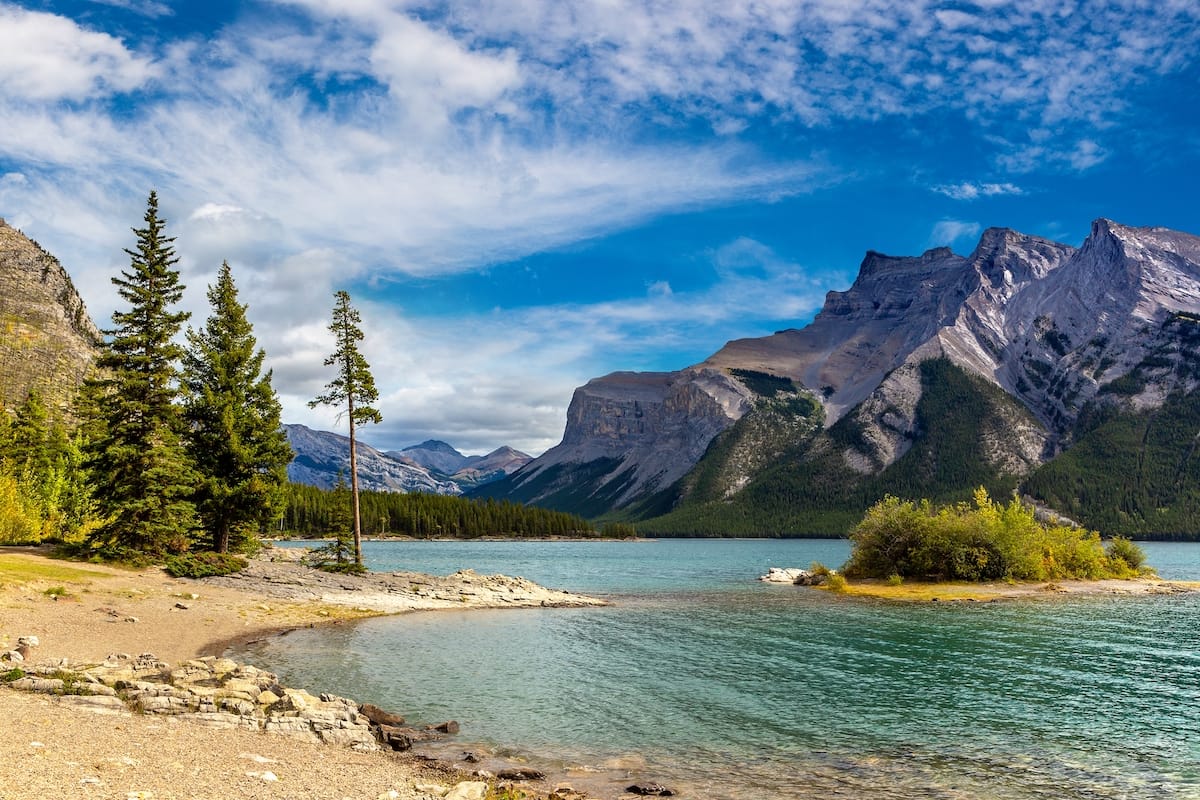
If the skies are clear, head to the Sulphur Mountain Gondola to enjoy stunning alpine scenery. The 8-minute ride offers fantastic vistas of Mount Rundle, Tunnel Mountain, and Bow Valley.
You can browse the interpretation center at the summit and soak up the 360-degree views from the two-level observation deck. Along the peak, a 1 km boardwalk stretches to Samson’s Peak, once used to track weather.
At 9,360 feet (2,865 meters), you’ll feel like you’re on top of the world.
If you plan to visit near sunset, reserve a table at the Sky Bistro, which offers a romantic setting and a fantastic menu.
Day 2
Start the day by exploring the other side of Bow River. You can get a closer look at the imposing Bow Falls near the Banff Hot Springs.
Consider booking a Bow River rafting tour if you want to ramp up the adventure. From here, the route around the Banff Golf Course offers an idyllic drive and an opportunity to see elk grazing on the greens.
No visit to Banff National Park is complete without a stop at the Cave and Basin Historical Site.
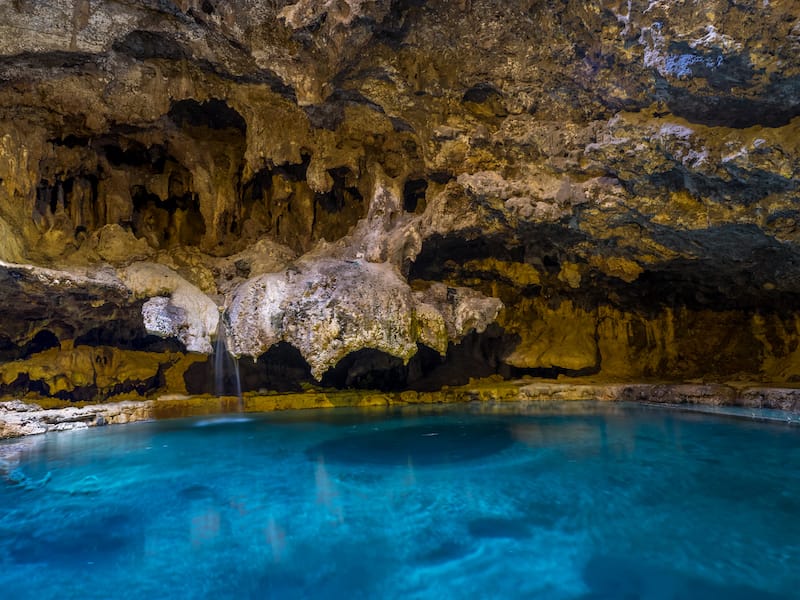
While there’s a small admission fee, bring your Discovery Pass, which gives you complimentary access.
The Cave and Basin has an indoor and outdoor museum.
Outside, you’ll see a hot spring pool and learn about the snail that resides there.
The inner courtyard documents how climate change has increased glacial retreats, and it’s shocking to see how much Athabasca Glacier has melted.
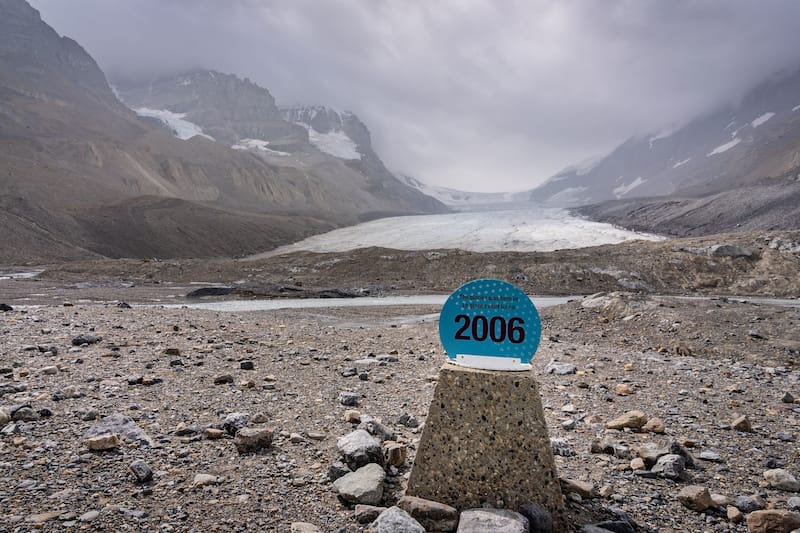
The “Cave” provides the pinnacle of a visit, and its beautiful pool is nestled in a grotto. While the underground mineral spring is interesting, it gives off a “rotten eggs” smell.
Below the building, a short 0.5 km looping marsh trail allows you to discover how the rich minerals contribute to life in the area.
Along the wooden boardwalk, the warm springs provide a year-round haven for animals and plants. If you’re lucky, you could see deer in the forest.
Once you complete your stroll, drive to Mount Norquay for a scenic drive and a lovely viewpoint overlooking the town of Banff. If you travel to the end of the road, you can take a gondola to the peak.
For a prime sunset view, head to Vermillion Lakes Road to watch the glow over Mount Rundle.
Day 3
Rise early to get a coveted parking spot at Lake Louise. Ideally, you’ll want to see Lake Louise and Moraine Lake on the same day.
Since you can no longer drive the Moraine Lake Road, you’ll need to book a time slot on the shuttle.
If you want to watch the sunrise at either Lake Louise or Moraine Lake, be prepared to be at the lake before 6 am.
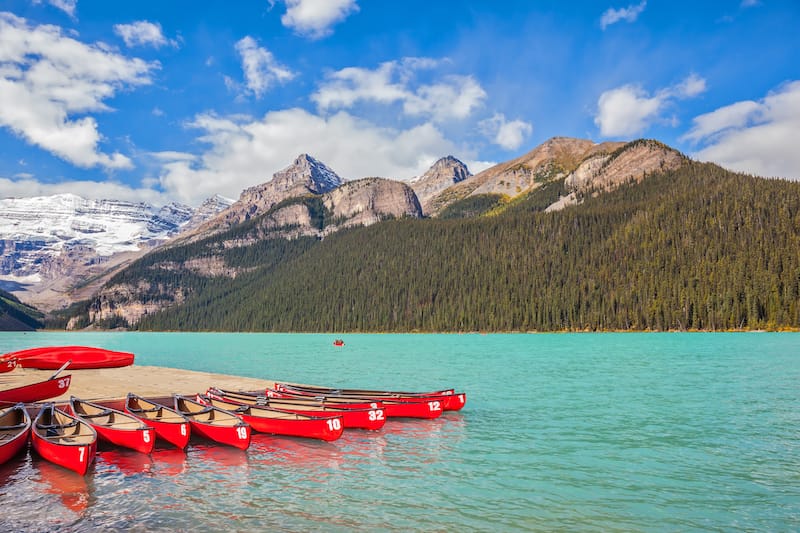
To cut down on the one-hour travel time from Banff, plan to stay in a hotel at Lake Louise instead.
Should you stay at the Fairmont Chateau Lake Louise, you could even watch the sunrise from your hotel room if you have a room with a lake view.
Lake Louise has been made famous from its pictures plastered all over the web. Its beautiful turquoise hues come from the rock flour and meltwater from Victoria Glacier.
The area offers many bucket list activities, from hiking to one of its mountainous teahouses to canoeing its frigid waters.
One thing that is pretty cool is that it is a year-round destination. By visiting Lake Louise in winter, you can ski, snowshoe, ice skate on the lake, and more!
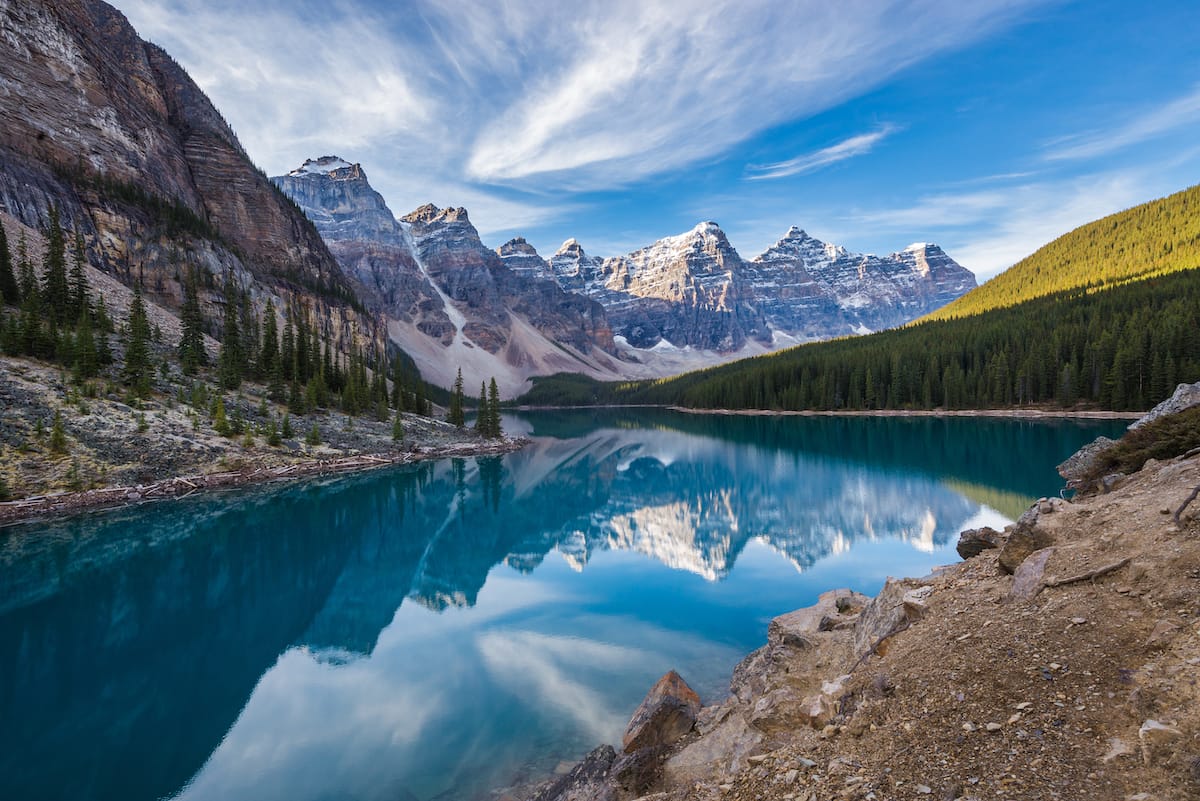
Located 14km from Lake Louise, Moraine Lake offers a similar experience with canoeing and hiking. The Valley of the Ten Peaks provides a scenic backdrop to the lake, best viewed from the rocky moraine.
This lake was featured on an older Canadian $20 bill, and its watercolor is more striking than Lake Louise.
The can’t-miss hikes in this area include the Consolation Lakes and Larch Valley, which offers spectacular autumn colors in the fall.
Day 4
Today, you’ll leave Banff and head north to Jasper National Park. If you were trying to decide which is better – Jasper or Banff – you will get to visit both on this itinerary!
Since the drive takes 3-1/2 hours, you’ll want an early start to take in the scenery and make some stops along the way.
The highway, known as the Icefields Parkway, provides one of the most scenic routes in Canada.
On the journey, there are countless viewpoints to see lakes, rugged mountains, and cascading waterfalls.
Bow Summit, a must-visit, provides beautiful views of another iconic body of water called Peyto Lake. Named after a famous explorer, Bill Peyto, its shape resembles a wolf head.
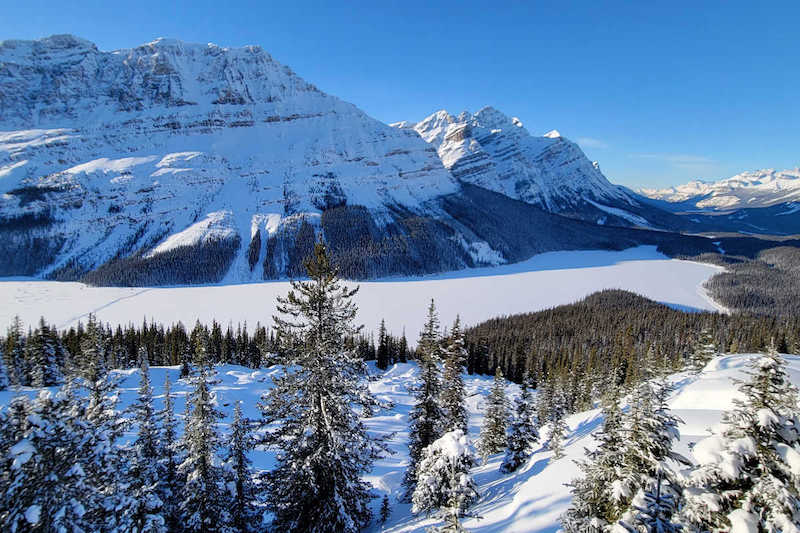
If you can only make one stop, ensure it’s at the Jasper National Park Icefield Information Centre. Here, you can purchase a combination ticket to ride a giant bus across Athabasca Glacier and walk the glass floor at the Columbia Icefields Skywalk.
Bundle up in layers because you’ll experience frigid temperatures on the glacier even in mid-summer.
The Ice Explorer buses provide a unique experience, and once you reach the plowed area on the ice, you can exit the vehicle and walk (or slide) on the ice.
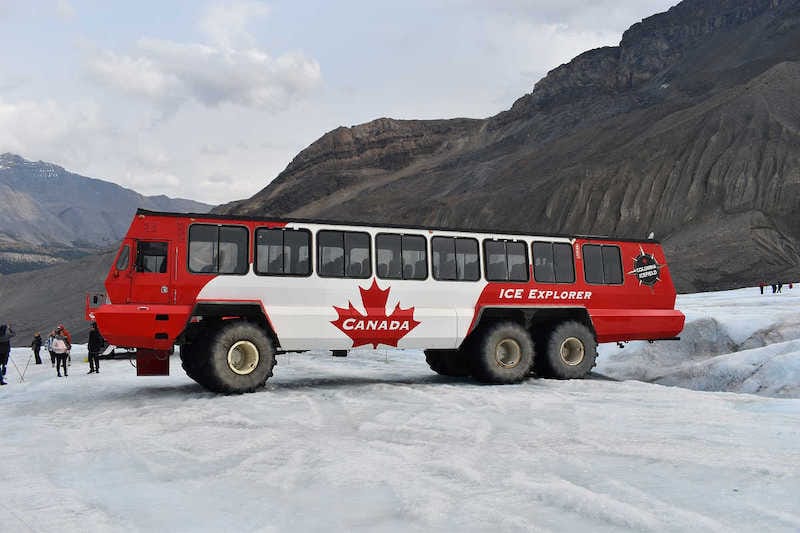
Attaching ice spikes to your shoes can prevent falls, and if you take a water bottle, you can sample the glacial water from an icy river.
After the bus ride, you’ll take another bus up the highway to the Skywalk.
Built 300 meters above the canyon, it’s not for the faint of heart. Mountain Goats take shelter from Golden Eagles beneath the Skywalk. So, if you can look down, you might see one.
Closer to the town of Jasper, Sunwapta Falls and Athabasca Falls provide two impressive waterfall viewing locations. You’ll reach Sunwapta first, and it’s the smaller of the two.
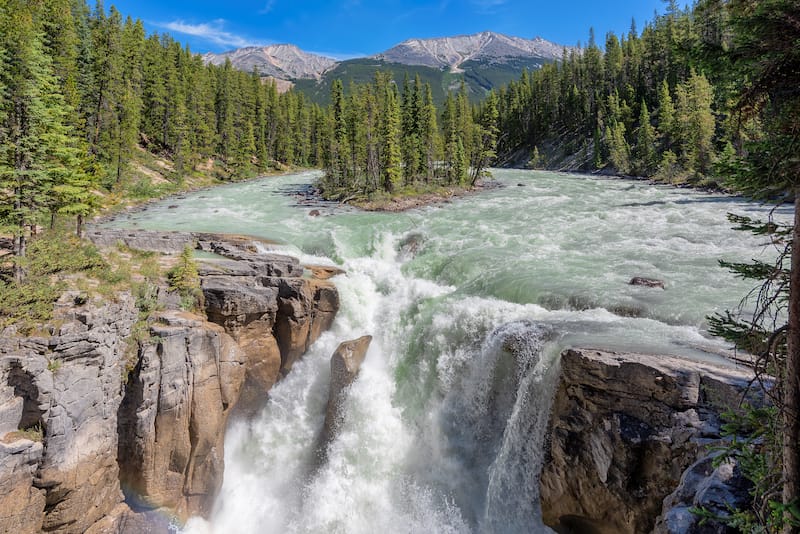
In comparison, Athabasca Falls provides a thunderous cascade that you can see from several different viewpoints. Make sure to take the path to the lower area because it goes through an ancient canyon.
Day 5
You’ll have a chance to see more wildlife in Jasper than during your few days in Banff. Elk are often sighted around town, along Hwy 93A, and at the Whistlers Campground if you are camping.
Begin the day with a drive to Patricia and Pyramid Lakes, north of Jasper. In the early hours, bears are regular visitors, as are elk and deer.
Pyramid Lake has lovely sandy beaches, a great place to enjoy a morning latte and savor the sound of silence. If you drive on the east side, you’ll see Pyramid Island with a backdrop of the towering Pyramid Mountain.
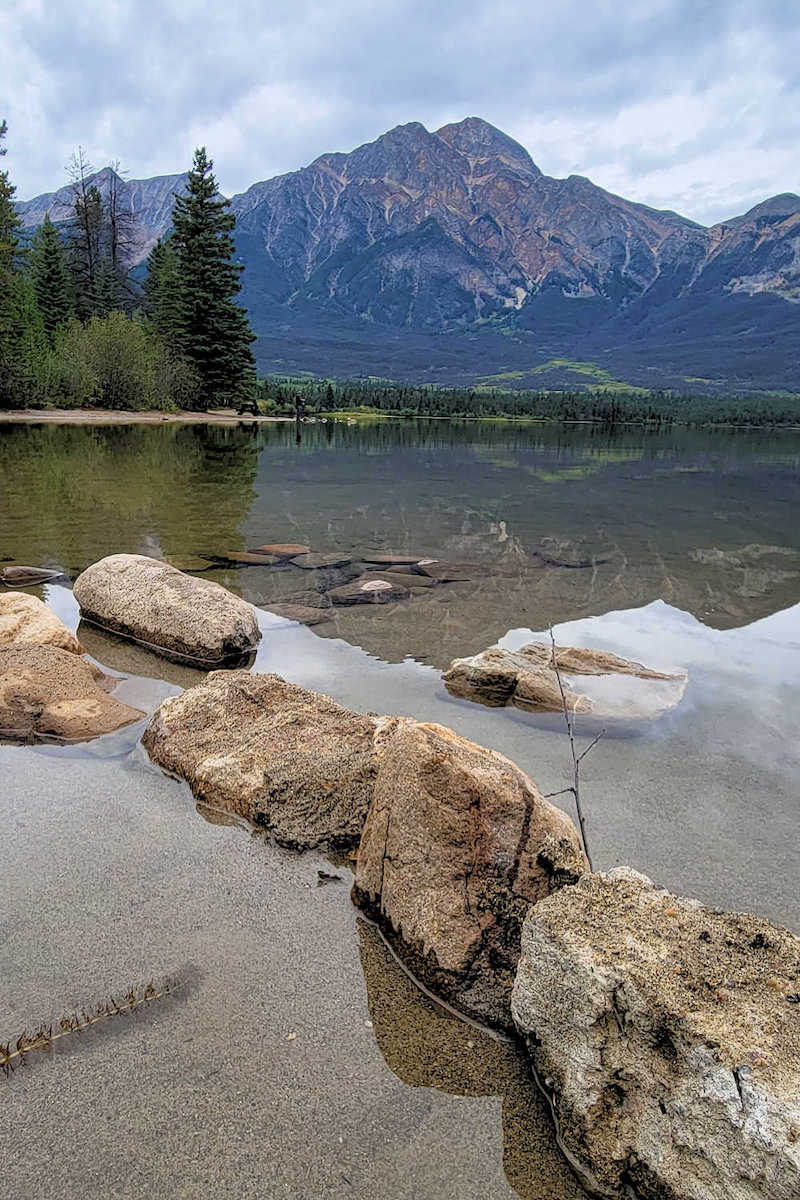
From here, head across the Yellowhead Hwy to Maligne Canyon, Jasper’s version of Banff’s Johnston Canyon. While this canyon isn’t constructed with cantilevered platforms, it welcomes just as many visitors.
As one of Jasper’s best hikes, the beauty of Maligne Canyon is that it doesn’t offer one starting point but three.
So, put on your hiking boots and prepare for a workout by walking from one end of the canyon to the other.
The canyon has six bridges over the Maligne River, with the top offering creviced views and the bottom a wide river.
The first parking lot reached allows you to hike up the canyon, with the downhill section on the return route.
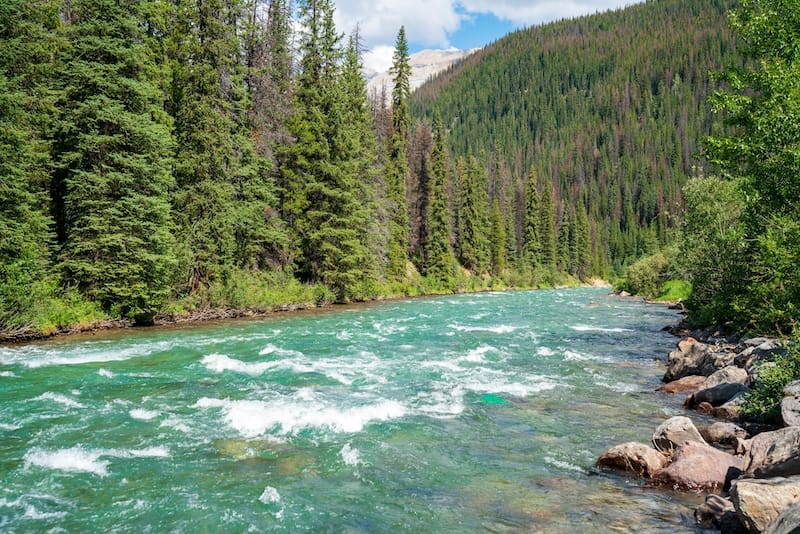
The second parking area offers a mid-way route. At the top, a looping trail meanders from the first bridge to the second. You’ll endure the uphill climb on the way back by hiking down.
There are six bridges over the Maligne River, and the roundtrip trail to see all six takes up to three hours!
Alternatively, you can hike to bridges one thru four and drive to the other two parking lots to see bridges five and six, which span the widened river as it exits the canyon.
Should you choose to hike to all six, you can have the uphill hike at the beginning by going from bridge six to one. Alternatively, hiking from one to six means tackling the uphill section on the return route.
Finish your day by driving north on the Yellowhead Highway. Here, Big Horn Sheep often graze on the roadside, sometimes causing a traffic jam as they cross the highway.
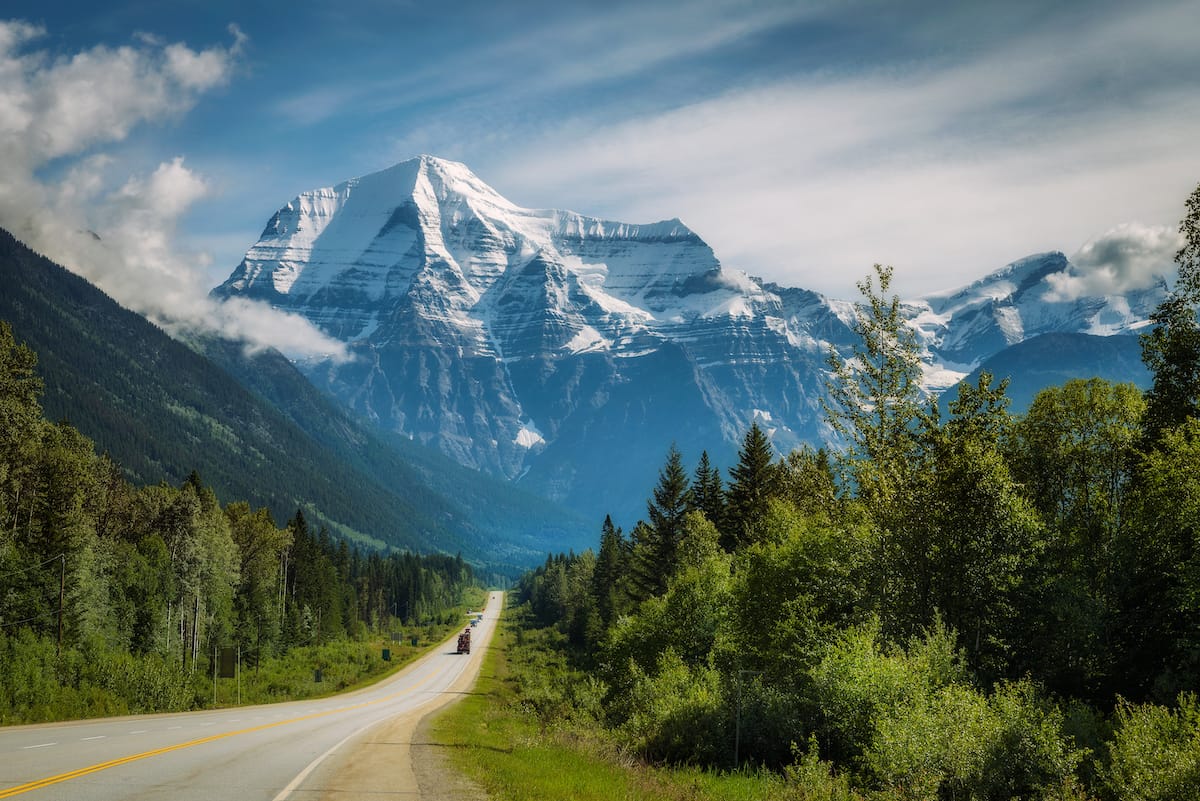
You’ll reach Jasper and Talbot Lakes if you drive a bit further. With the road built on a sandbar between them, you’ll view contrasting-colored lakes on either side.
Day 6
Today’s itinerary includes two large Jasper lakes, Medicine and Maligne. While they don’t have the beautiful turquoise hues of Moraine and Lake Louise, they exude a different kind of beauty.
The drive on Maligne Lake Road affords the opportunity to see black bears, sheep, deer, and elk.
You’ll reach Medicine Lake first, known for its underground drainage. Depending on the time of visit, the lake could be high or very low, revealing its mudflats.
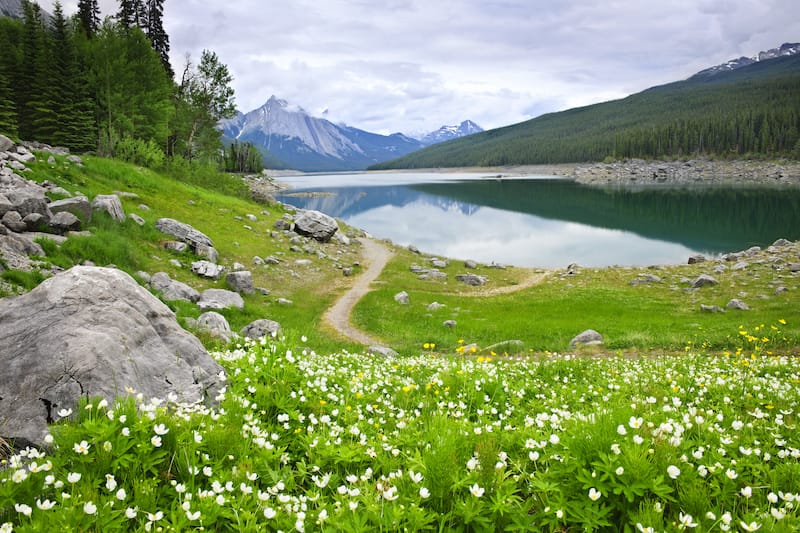
Around Medicine Lake, the abundance of blackened trees is a stark remember of the dangers of wildfires. In 2015, a lightning strike caused a fire that took two weeks to contain.
You’ll reach Maligne Lake at the end of the road. Maligne Lake is known for its iconic images of Spirit Island.
To see the island, you’ll need to book a boat tour. On tour, you’ll have an opportunity to see bears and moose along the lakeshore.
Also, taking the 2.7 km trail to Moose Lake increases your chance of spotting moose.
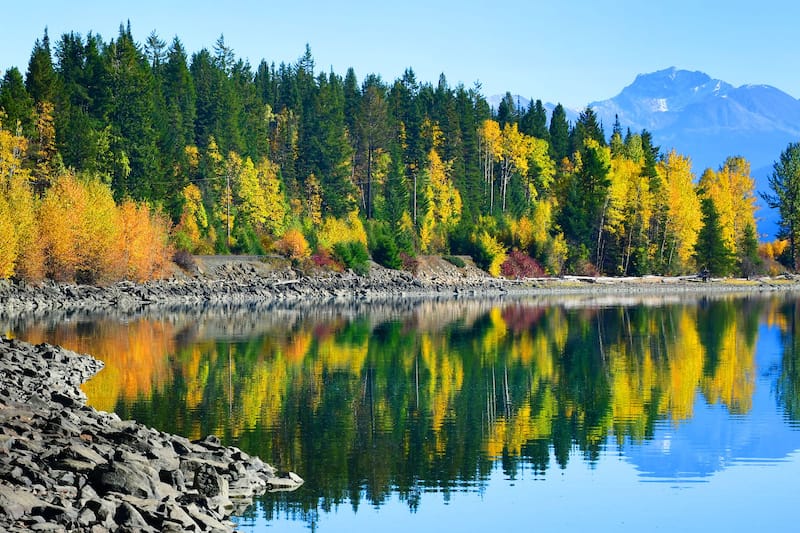
Moose are common in the marshy area. In the lake, a small island is reminiscent of Spirit Island in the nearby Maligne Lake.
You’ll need hiking boots with good ankle support as you’ll encounter mud and lots of roots. Use a bug repellent, as mosquitoes can be rampant on the trail close to the lake.
Day 7
Edith Cavell will be the starting point of your final day. You’ll need to drive the Cavell Road with a small vehicle since the 14 km stretch has narrow sections and sharp switchbacks.
Typically open between mid-June and mid-October, the journey provides a picturesque journey.
From the parking area, there are two options for hiking.
Take the gravel Path of the Glaciers Trail to get a better look at Angel Glacier and Cavell Pond. This route provides the easiest option. Even in the heat of summer, giant icebergs adorn the Cavell Pond.
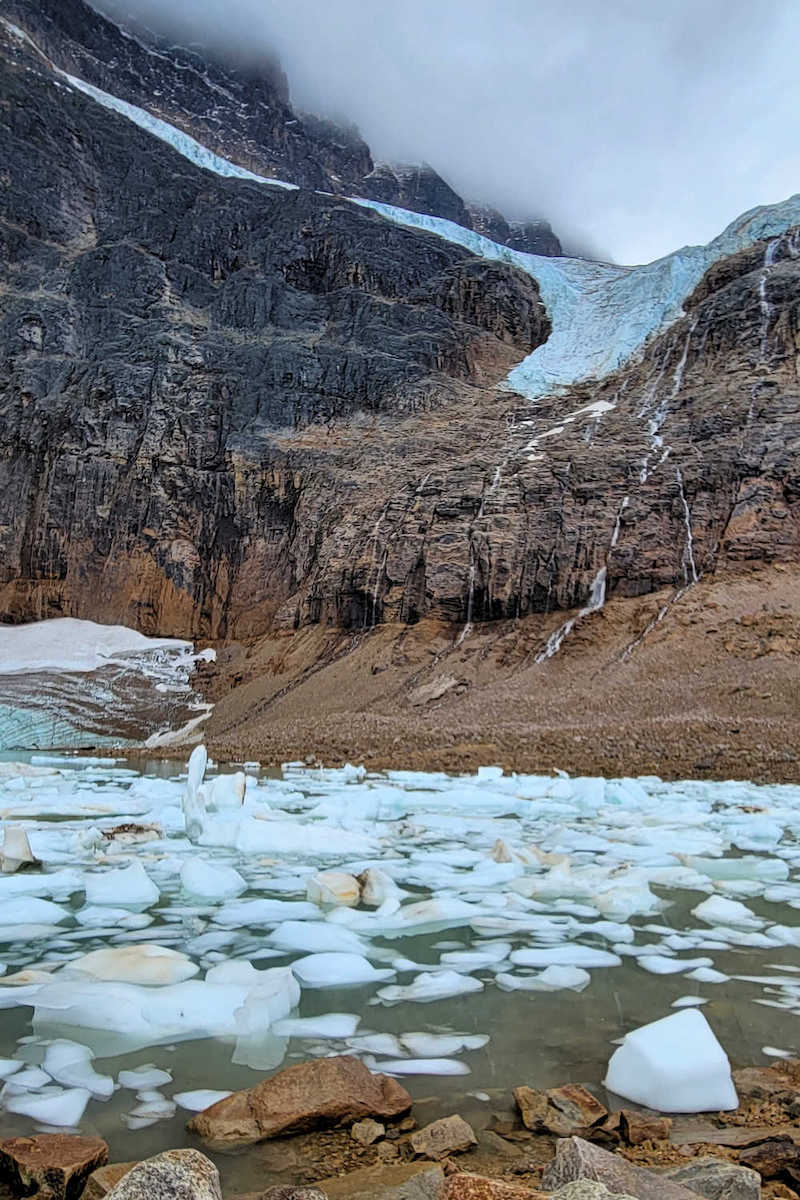
For elevated views of the pond and glacier, hike the Cavell Meadows Trail, which will give you a workout. In spring, wildflowers fill the meadows, and you may see hoary marmots, chipmunks, and pikas nestled amongst the rock pile.
As you climb, the views get better, and you’ll be able to see the top of Angel Glacier across the valley.
At the trail’s peak, there’s a chance of spotting endangered caribou and grizzly bears. Carry a bear bell and bear spray, and know how to use it.
After your time at Edith Cavell, enjoy the afternoon trekking to five small tarns on the Valley of the Five Lakes Trail.
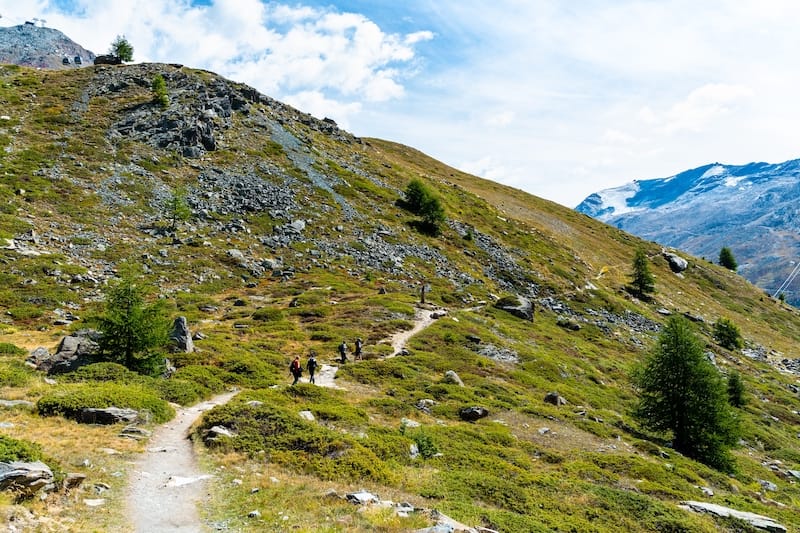
Located south near the Icefields Parkway, the first lake offers the largest body of water.
However, all of these lakes are small and, due to their size, are ideal for swimming.
The 2.3 km loop showcases lakes of contrasting colors from green to blue. So, relax in one of the iconic red Adirondack chairs, try your luck at fishing, or see if you can spot waterfowl, moose, or bears.
Should You Plan a Canadian Rockies 7 Day Trip?
After one trip to the Canadian Rockies, you’ll want to return for an encore.
Beyond the national parks of Banff and Jasper, you can visit Yoho and Kootenay National Parks as well as Robson and Mount Assiniboine Provincial Parks.
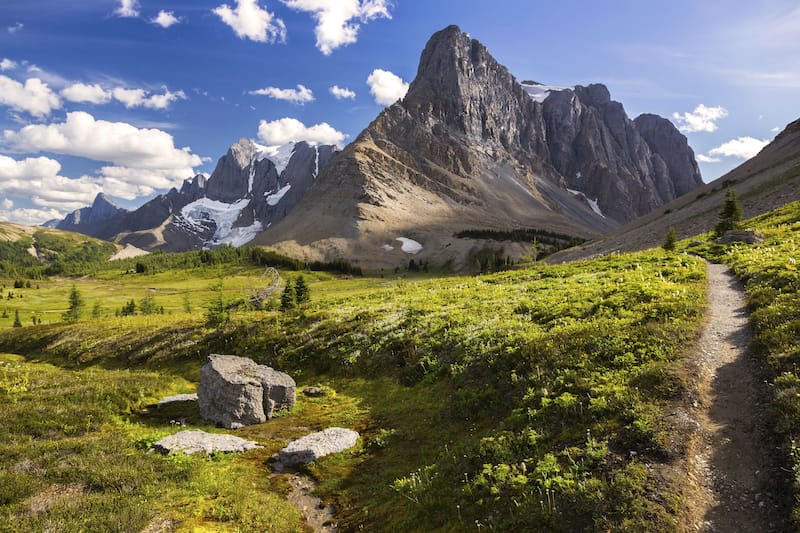
Winter provides a contrasting experience if you’re willing to brave the -22 Fahrenheit temperatures.
While you generally can’t camp in the winter months, you’ll benefit from hotel rates at 50% less than the peak summer time.
Did we miss any of the top places to visit on this 7 day Canadian Rockies itinerary? Let us know in the comments!
More Canada Travel Guides
- Best excursions in Iqaluit, Nunavut
- Weekend in Toronto
- Vancouver Island road trip
- Calgary in winter
- Jasper vs Banff
Pin this Canada Rockies 7-Day Itinerary
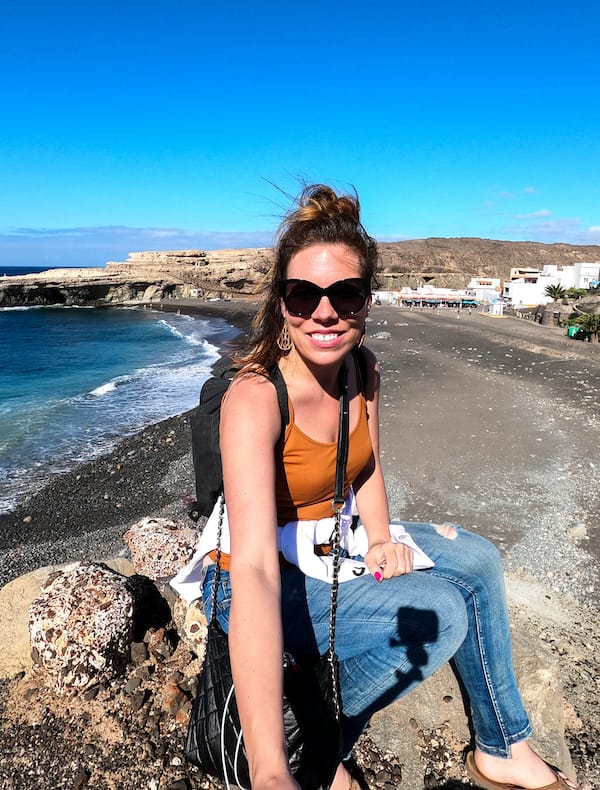
Megan is a travel blogger and writer with a background in digital marketing. Originally from Richmond, VA, she now splits her time between Frankfurt, Germany and Arctic Finland after also living in Norway, Armenia, and Kazakhstan. She has a passion for winter travel, as well as the Nordic countries, but you can also find her eating her way through Italy, perusing perfume stores in Paris, or taking road trips through the USA. Megan has written for or been featured by National Geographic, Forbes, Lonely Planet, the New York Times, and more. She co-authored Fodor’s Travel ‘Essential Norway’ and has visited 45 US states and 100+ countries.

